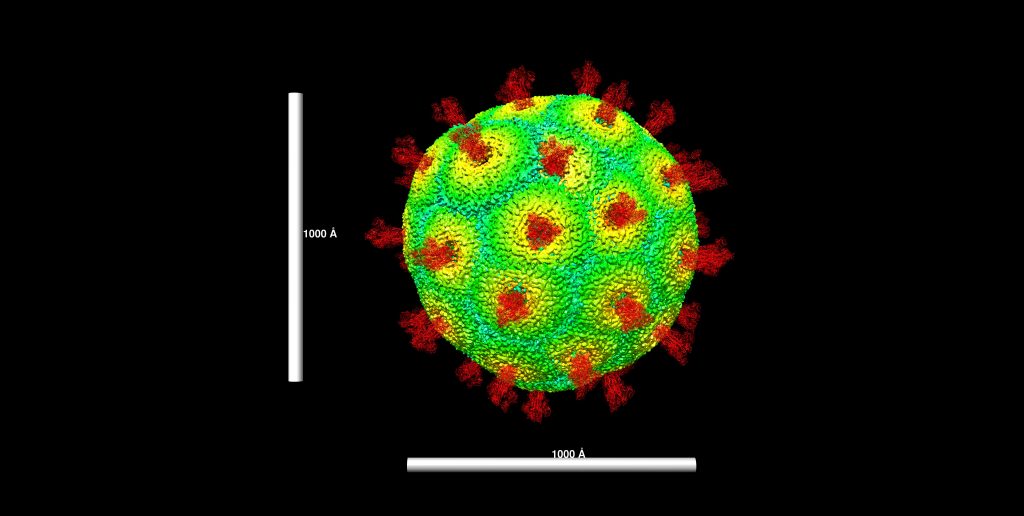Bridges-Powered Experimental Test for Coronavirus Reveals Viral Changes, Host Responses
A new experimental test to identify the SARS-CoV-2 virus from genetic material is being developed by an international team led by Weill Cornell Medicine scientists. Their new method, combined with a large-scale sequence analysis of the virus, is shedding light on how the COVID-19 outbreak and the virus developed in New York City. Using the large-memory nodes of PSC’s Bridges supercomputing platform the team, led by Christopher Mason, Jonathan Foox, and Cem Meydan of Weill Cornell Medicine, has identified a strain of the virus that developed in the city from March into April 2020, at the peak of the epidemic. Parallel analysis of how the genes in patients’ lung cells react to the infection revealed how patient responses to the virus can affect the course of the disease.
The researchers note that their experimental test (called LAMP, or loop-mediated isothermal amplification) confirmed changes in viral presence for clinical samples that offer a broad picture of how the virus has impacted patients. Those data, plus the in-depth analysis of host-cell transcriptomes—which shows which genes are active in a given tissue—performed by Mason’s team also provide clues as to why the virus affects patients with hypertension, heart conditions and diabetes more severely, and how that might affect treatments for COVID-19.
The group has submitted a paper on their findings to a peer-reviewed journal.
Bridges Helps Catholic University Visualize Coronavirus at Atomic Detail

 SARS-CoV-2 visualized using the ChimeraX program. Spikes consist of three protein subunits, color-coded by subunit (PDB ID: 6VSB). The model is built around a core from SARS-CoV (EMDB ID: 1423). There are 46 spikes in a core of 100 nm diameter.
SARS-CoV-2 visualized using the ChimeraX program. Spikes consist of three protein subunits, color-coded by subunit (PDB ID: 6VSB). The model is built around a core from SARS-CoV (EMDB ID: 1423). There are 46 spikes in a core of 100 nm diameter.
The outer structures of the SARS-CoV-2 virus that causes COVID-19 have now been visualized down to the positions of every atom, thanks to the power of PSC’s Bridges supercomputing platform. Victor Padilla-Sanchez of the Catholic University of America in Washington, DC, has used Bridges’ large-memory nodes in the massive task of computing images of the virus via the interactions between 6 million atoms for each virus and 300 million atoms in 16 viruses as they merge with the outer membrane of a human lung cell.
Padilla-Sanchez created a simulated virus based on the “spike” protein of SARS-CoV-2 from a COVID-19 genetic sequence obtained on Feb. 26, 2020. The spike protein is the only one necessary for the virus to invade a host cell. To simplify the massive computational task, he simulated the viral exterior around a core that conforms to the laboratory-measured shape and size of the core of the similar SARS virus, SARS-CoV, from 2002 (EMDB ID: 1423). from laboratory images. The simulation, which will be documented in a research article now in preparation, is meant to provide scientists with a more exact model of the virus upon which to design drugs, vaccines and other clinical interventions.
